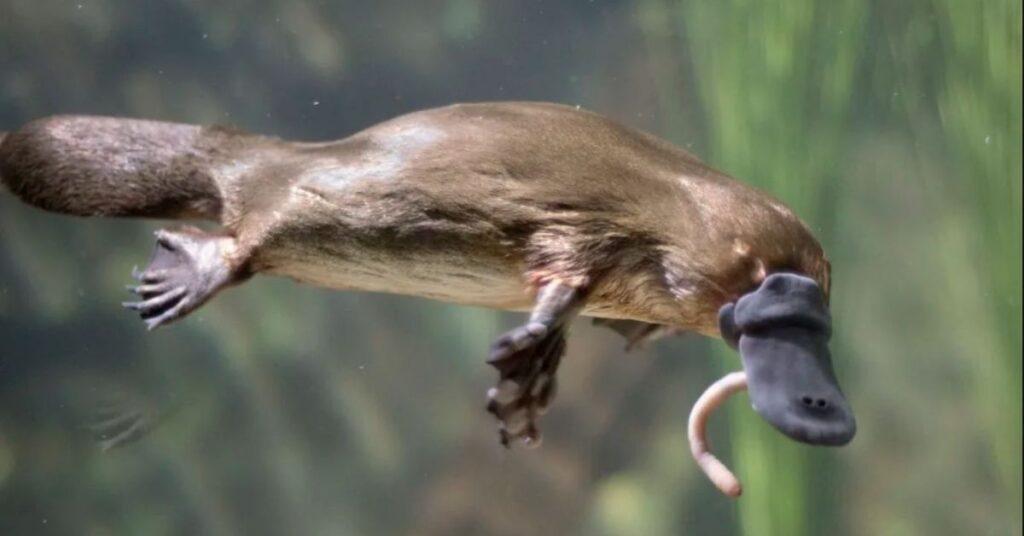
Aside from being colorful cartoon characters, Perry the Platypus and Knuckles the Echidna have one more thing in common: They’re representations of the monotremes, an extremely small and rather strange group of animals.
Much like other mammals, monotremes possess a single-boned mandible (lower jaw), three bones in the middle ear, high metabolic rates, hair, and the capacity to produce milk for their young.
A number of peculiar characteristics, however, make monotremes unique in the animal kingdom. For starters, these mammals have highly modified snouts or beaks, and lack teeth as adults. Perhaps their best-known trait is that they lay eggs instead of giving live birth. Similar to reptiles, monotremes have a single cloaca for reproduction and expelling waste from their bodies. (In fact, that’s where they got their name: “monotreme” literally means “single hole.”)
A total of five living species comprise this mammalian group. The duck-billed platypus (𝘖𝘳𝘯𝘪𝘵𝘩𝘰𝘳𝘩𝘺𝘯𝘤𝘩𝘶𝘴 𝘢𝘯𝘢𝘵𝘪𝘯𝘶𝘴) is endemic to Australia, while the four extant species of echidna (family Tachyglossidae) are only found in Australia and New Zealand. Recent studies have revealed that platypuses and echidnas had shared semiaquatic ancestors. Furthermore, they likely diverged on the evolutionary tree sometime between 19 million and 48 million years ago.
And just this year, we learned something new and amazing about platypuses: they’re biofluorescent, meaning their pelts give off a blue-green glow under ultraviolet light.
Today’s Science History Milestone: On December 8, 2010, SpaceX became the first private company to successfully launch, orbit and recover a spacecraft, after the maiden launch of its Dragon cargo spacecraft.
Still remember your 5th-grade science classes? Test your knowledge and see if you still remember these facts and fundamental concepts in human anatomy, biology, botany, and other branches of science. Click here to try the “Are You Smarter Than A Pinoy Fifth-Grader” Challenge.
Follow the hashtag #FlipFacts on Facebook and Instagram to get your regular dose of science trivia!
References:
- https://ucmp.berkeley.edu/mammal/monotreme.html
- https://www.ucl.ac.uk/museums-static/obl4he/vertebratediversity/monotremes.html
- https://www.scientificamerican.com/article/extreme-monotremes/
- https://www.sciencedirect.com/topics/biochemistry-genetics-and-molecular-biology/monotreme
- https://www.nationalgeographic.com/animals/2020/11/glowing-platypus/
Author: Mikael Angelo Francisco
Bitten by the science writing bug, Mikael has years of writing and editorial experience under his belt. As the editor-in-chief of FlipScience, Mikael has sworn to help make science more fun and interesting for geeky readers and casual audiences alike.






